Search Results for Tag: Kangchenjunga
Tamara Lunger: “I am currently searching”
“I often wish I had been born a hundred years ago,” says Tamara Lunger. “When I hear the 90-year-olds talking, I think to myself: Oh, they were still adventurers! Today we are only pussies compared to them.” Yet, in 2010, at the age of 23, the professional climber from South Tyrol stood on the summit of the eight-thousander Lhotse, as the youngest woman at that time, and in 2014, she scaled K2, the second highest mountain on earth, without bottled oxygen.
During the “International Mountain Summit” in Brixen I am hiking with Tamara from the Latzfonserkreuz downhill. Her parents are keeping the alpine hut up there. We talk about Tamara’s adventures of the past years. The 32-year-old is a honest soul and doesn’t mince her words: “People tell me: ‘You can talk easily, you can live what gives you pleasure.’ However, sometimes there is something negative in my pleasure that I have to accept and learn from. That’s actually what’s important.”
![]() read more
read more
David Göttler: “Some 8000ers are still on my list”
They have two homes. German professional climber David Göttler and his partner Monica Piris spend the winter in Chamonix am Mont Blanc, the summer in Monica’s native northern Spain, between the towns of Bilbao and Santander, “where Spain is still really green”, David enthuses. This summer, as reported, Göttler had returned from Pakistan empty-handed. Bad weather had put a spoke in the wheel of him and his teammate, Italian Hervé Barmasse, on the 7,932-meter-high Gasherbrum IV in the Karakoram. Yesterday Göttler celebrated his 40th birthday in Spain – not in the mountains, but on the construction site, as he tells me, when I belated congratulate him: “I have finished my training room. So it was a good day.”
40 years, David, that’s a mark. Many ook back then on their lives or make plans for the future. You too?
![]() read more
read more
Thomas Lämmle successful on Makalu
Persistence pays off. The German high altitude climber Thomas Lämmle reached, as he wrote on Facebook yesterday, on last Sunday the 8,485 meter high summit of Makalu, the fifth highest mountain on earth. The 52-year-old from the city of Waldburg in Baden-Württemberg climbed without bottled oxygen and Sherpa support. Last year, Thomas had returned empty-handed from Makalu after four summit attempts, all of which had failed due to bad weather. Now, according to his own words, he also wants to tackle Lhotse, the fourth highest mountain in the world, “before the snowfall – means May 21st”. Makalu was Lämmle’s sixth eight-thousander after Cho Oyu (in 2003), Gasherbrum II (in 2005 and 2013), Manaslu (in 2008), Shishapangma (in 2013) and Mount Everest (in 2016).
![]() read more
read more
Danger zone tent
Actually, the tent is a place of refuge and security. And most of the time I felt safe when I lay in my tent in the mountains. But there were exceptions. For example in 2004 during my reportage trip to K2, when I woke up suddenly in the base camp at the foot of the second highest mountain on earth, because the glacier made noises under my tent floor, as if it wanted to devour me in the next moment. Ten years later, during the first ascent of the seven-thousander Kokodak Dome in western China, we pitched up Camp 1 at 5,500 meters at a quite exposed spot – and I wondered: What happens if a real storm is raging here? That’s what I remembered when I learned of the death of Italian Simone La Terra on Dhaulagiri earlier this week.
![]() read more
read more
Maya Sherpa: Next try on Kangchenjunga
Second attempt. This spring, Maya Sherpa, one of Nepal’s most famous and best female climbers, will tackle Kangchenjunga, the third highest mountain in the world. “I am happy to go there again,“ the 40-year-old told me as we met in Kathmandu last week. “I have found sponsors who support me. However, my goal is not only to climb Kangchenjunga, I like to climb more 8,000-meter-peaks as the first Nepali woman.” In May 2017, Maya and her Nepalese friends and teammates Pasang Lhamu Sherpa Akita and Dawa Yangzum Sherpa had had to turn around on the 8,586-meter-high Kangchenjunga, about 300 meters below the highest point. The entire group of summit candidates had run out of ropes. “One of our Climbing Sherpas told us then that they had made the same mistake in spring 2013,” said Maya. “At that time, they went up to the summit. On descent, two Sherpas and three foreign climbers died because there was no rope, they were tired and it was extremely slippery in the upper part of the mountain, especially on the rock.”
![]() read more
read more
Simone Moro turns 50: “I’m still alive”
It does not hurt more than usual. I can say that from my own experience. It is rather a mental challenge to realize that the first 50 years are over and the second half of life has definitely begun. Time to take stock. This Friday, Simone Moro celebrates his 50th birthday. The Italian can already be more than satisfied with his career as a high-altitude climber. No one else besides Simone has four winter first ascents of eight-thousanders on his account.
In 2005, Moro summited along with the Polish climber Piotr Morawski the 8027-meter-high Shishapangma for the first time in the cold season. Three other first winter ascents followed: In 2009 with the native Kazakh Denis Urubko on Makalu (8,485 m), in 2011 with Urubko and the American Cory Richards on Gasherbrum II (8,034 m) and in 2016 with the Spaniard Alex Txikon and the Pakistani Muhammad Ali “Sadpara” on Nanga Parbat (8,125 m). Simone did all these eight-thousander climbs without bottled oxygen. Last spring, Moro and the South Tyrolean Tamara Lunger had planned to traverse the four summits of the Kangchenjunga massif, but had to turn back without having reached a single summit. Two attempts ended at 7,200 meters, because Simone suffered from stomach ache. Moro is married to the South Tyrolean climber Barbara Zwerger and has a 19-year-old daughter and a seven-year-old son. Simone has also earned his merits as a rescue helicopter pilot in the Himalayas.
Simone, half a century in your legs, how does that feel?
![]() read more
read more
The eternal rascal
Even aged 75, he appears to be a rascal. Good-humored, always good for a joke, the laugh lines on his face – and fit as a fiddle. “Climbing is my fountain of youth,” says Peter Habeler. The Tyrolean from the Zillertal is still climbing through steep walls. Shortly before his big birthday even through the Eiger North Face, along with David Lama, in winter. “It was something very special for me,” Peter tells me as we hike below the peaks of the Geisler group in the Villnöss Valley in the South Tyrolean Dolomites. “Many years ago, I discovered David’s talent when he did his first climbing as a little boy in my alpine school in the Zillertal. I saw that he would become a great climber.” Today Lama is one of the best climbers in the world. “When I climbed behind him in the Eiger North Face and watched how easily and smoothly he mastered even the most difficult passages, I felt like I was back in time when I myself was still young,” says Peter.
![]() read more
read more
Felix Berg: “Extremely spontaneous expedition”
Unpredictability is an essential part of adventure. And the more ambitious a mountain project, the greater is the uncertainty as to whether it really ends with a success. Thus the Italians Tamara Lunger and Simone Moro, who had planned to traverse the four summits of the Kangchenjunga massif without bottled oxygen, had to turn back without having reached a single summit. Two attempts ended at 7,200 meters, because Simone suffered from stomach ache. The German Thomas Laemmle returned empty-handed from Makalu, after four (!) failed summit attempts without supplemental oxygen and Sherpa support, always forced back by bad weather. And on the Northwest Face of Annapurna, the 33-year-old Pole Adam Bielecki, the 63-year-old Briton Rick Allen and the 36-year-old German Felix Berg had to capitulate halfway. “It was completely the right decision to turn around,” Felix tells me. “On the day of our descent, there was heavy snowfall. It would not have been possible with the weather.”
![]() read more
read more
That’s not on!
In the next few days there will surely be a lot of success reports on the eight-thousanders. Before we switch to the congratulation mode, unfortunately, we have to bring up some painful objects of commercial climbing. I’m really not a moralizer, but some news from the last few days have raised my concern – especially today’s tweet by Tim Mosedale. “Ronnie & Pemba have arrived at Lhotse high camp to find that some scumbags have nicked the supply of oxygen. Completely unacceptable”, writes the British expedition leader, who summited Mount Everest on Wednesday for the sixth time. And he sent another tweet: “Stealing Os jeopardises lives of other climbers. If it’s an emergency let us know and of course we’ll help. Taking it is utterly disgraceful.” It’s really shocking, absolutely negligent and inexcusable that egoism on the mountain goes so far that even oxygen bottles are stolen. This does not show the attitude of some (hopefully only a few) climbers on the highest mountains on earth in a very favourable light. This also applies to what happened in the failed summit attempt on Kangchenjunga last Tuesday.
Incorrect information in the highest camp
The Australian Chris Jensen Burke reports in her blog, a leader of another group had told them in the last camp below the summit that ropes had been fixed up to 8,100 meters on the previous day. Therefore it would not be necessary to take all ropes available in the camp, he added – and that no Sherpas would have to ascend long before the clients of the commercial expeditions. Half a day later this turned out to be simply wrong. As a result, there was a “conga-line” (Chris) at an altitude of about 8,000 meters: ahead the Sherpas, who still had to secure the route, behind them the summit aspirants of the different teams. Then, in consequence of the incorrect information at the high camp, the ropes ran out. The summit attempt had to be abandoned, all climbers descended.
No trace of appreciation
“Why were we given incorrect information?,” Chris Jensen Burke asks. “I have to believe inexperience played a key part, and there must have been no appreciation by the chap of the consequences.” No trace of teamwork. However, also the comment of a client quoted by Chris make me shake my head: “If a route setter knows climbers are coming up behind them, they should move faster.” These words are short of any respect for the work of the Sherpas. And the question must be allowed: What’s about the self-responsibility of the clients?
Among those who turned back on Kangchenjunga were the three Nepalese Maya Sherpa, Pasang Lhamu Sherpa Akita and Dawa Yangzum Sherpa. Today they decided to leave the mountain because of the rather bad weather forecasts. “It’s clearly a very disappointing decision, and we would obviously wish that we could return with a summit,” the Sherpani trio wrote on Facebook.
Summit, summit, summit …
There’s been a hail of success reports from Nepal. Especially from Mount Everest. Dozens of climbers reached the summit at 8,850 meters from both the Tibetan north side and the Nepalese south side. Among them was the Romanian Horia Colibasanu, the first mountaineer to have climbed Everest this spring without bottled oxygen. “It was very, very hard and very, very cold,” the 40-year-old informed on Facebook. For Colibasanu it was the eighth eight-thousander. He ascended from the north, as did the German expedition leader Dominik Mueller. The 46-year-old head of the operator Amical alpin reached the summit along with a client, both of them used bottle oxygen.
![]() read more
read more
Moro and Lunger plan Kangchenjunga traverse
“It’s a wonderful project,” says Simone Moro. “It’s the highest traverse possible on the planet.” Via Facebook live from Kathmandu, the 49-year-old Italian and his 30-year-old South Tyrolean climbing partner Tamara Lunger yesterday revealed the secret of their new project. And that’s really a tough job. This spring, Simone and Tamara want to traverse the four summits of the Kangchenjunga massif which are higher than 8,000 meters: from the West Summit (8,505 meters) to the Main Summit (8,586 meters), then across the Central Summit (8,473 meters) to the South Summit (8,476 meters). The whole thing in Alpine style, means without high camps, without Sherpa support and without bottled oxygen. In 1989 a Russian expedition had succeeded the traverse for the first time, however, using breathing masks.
![]() read more
read more
With Sherpa women’s power to the top of Kangchenjunga
The trio wants the triple. After having climbed Mount Everest and K 2, Maya Sherpa, Pasang Lhamu Sherpa Akita and Dawa Yangzum Sherpa plan to scale next spring also the third-highest mountain in the world, the 8,586-meter-high Kangchenjunga in the east of Nepal. Via the normal route, with bottled oxygen. They climbed Everest still separately – Maya for the first time in 2006, Pasang Lhamu in 2007 and Dawa Yangzum in 2012 – but K 2 in Pakistan in 2014 for the first time together as a team. As early as in 2015 the trio wanted to climb Kangchenjunga. However, at that time the expedition did not come about for financial reasons. This time, too, there is still money left, Maya Sherpa, who is to lead the first Nepalese women’s expedition to Kangchenjunga, writes to me. The Trekking Agencies’ Association of Nepal (TAAN) has announced to provide financial support as well as Tashi Lakpa Sherpa, managing director of the expedition operator Seven Summit Treks, says Maya Sherpa. The Nepal Mountaineering Association (NMA) has not yet decided whether it will also participate in the costs. In addition, the three Sherpani try to get a free permit for their expedition by the government.
![]() read more
read more
Auer and Bluemel succeed first ascent on a 7000er in Nepal
“It was one of those expeditions where it all fit together perfectly,” says Hansjoerg Auer. The 31-year-old Austrian and his countryman Alex Bluemel succeeded the first ascent of the North Face of the 7005-meter-high Gimmigela East, in Alpine style, means without ropes and high camps, without Sherpa support and without bottled oxygen. The sub-peak of Gimmigela Chuli (7350 m) is located in the far east of Nepal, on the border with India, quite hidden in the area around the eight-thousander Kangchenjunga, the third-highest mountain on earth.
![]() read more
read more
Nives Meroi: “The arrogance of commercial climbing”
One eight-thousander is still missing. Then Nives Meroi and Romano Benet would be the first couple who would have scaled together the 14 highest mountains in the world – always without bottled oxygen and without Sherpa support. On 12 May, the two 54-year-olds from Italy stood at the top of their eight-thousander No. 13, the 8485-meter-high Makalu in Nepal.
Nives was 19 years old when she met Romano. First he was her climbing partner, then her life partner. They are married for 27 years. In 1998, they scaled Nanga Parbat, it was their first eight-thousander. In 2003, they succeeded in climbing the Karakorum trilogy of Gasherbrum I, II and Broad Peak in just 20 days. In 2007, Meroi was the first Italian woman who climbed Everest without oxygen mask.
Life-threatening disease
But there were also setbacks. In 2009, Meroi had a good chance to become the first woman on all 14 eight-thousanders. On Kangchenjunga, at 7500 meters, Romano suddenly became increasingly weak. He tried to persuade Nives to climb on alone. But she refused and supported him during the descent. The reason for Benet’s weakness was serious: aplastic anemia. Two bone marrow transplants were necessary to save Romano’s life. They returned to the Himalayas. In 2014, Romano and Nives climbed Kangchenjunga. And now Makalu. Five questions to and five answers by Nives Meroi:
Nives, Romano and you have managed to climb Makalu, your 13th eight-thousander. If you compare it with the other twelve, was it rather one of the more difficult or easier ascents?
![]() read more
read more
Pathetic? No way!
Nepal needs strong women like Maya Sherpa. “With our women expedition project we want to inspire women doing what we really are capable of even after being married and having children”, the 36-year-old climber writes to me. In July 2014, she scaled the 8611-meter-high K 2 with Dawa Yangzum Sherpa and Pasang Lhamu Sherpa Akita. They were the first female climbers from Nepal on top of the second highest mountain in the world. A week and a half ago, I introduced the trio’s new project in my blog: the planned ascent of Kangchenjunga next spring. I got Maya’s answers to my questions concerning their plans a few days after the article had gone online.
![]() read more
read more



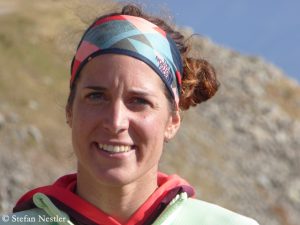

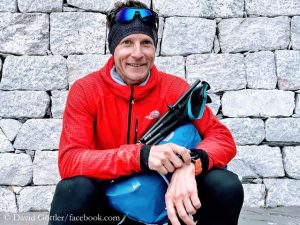



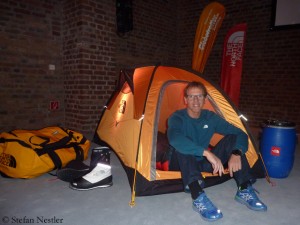
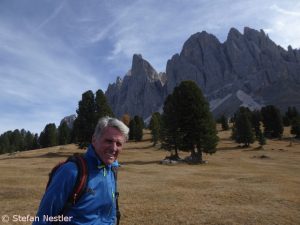
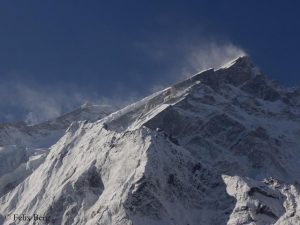
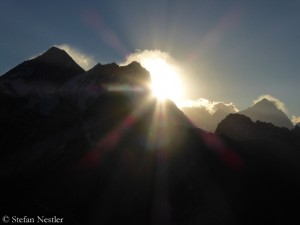
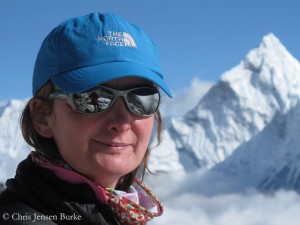
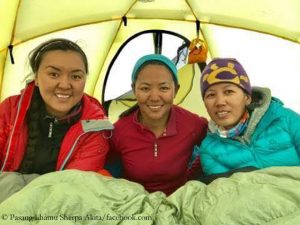
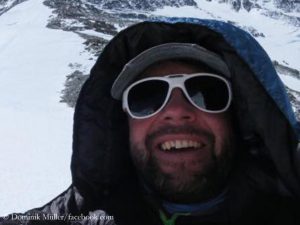
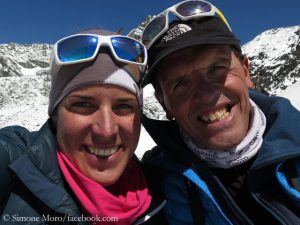

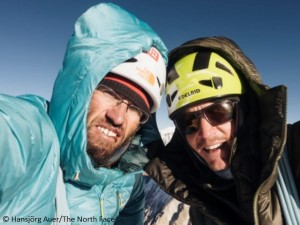
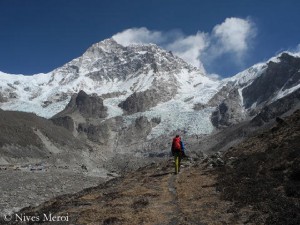
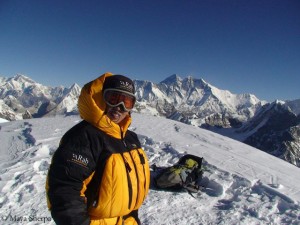





Feedback